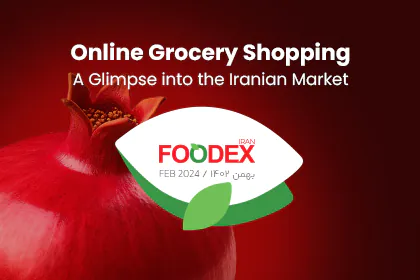The food industry is all about connections. You could be a producer, distributor, or even a marketing pro. Still, without good networking, it simply opens doors to numerous opportunities, partnerships, and fresh insights. In today’s fast-moving and competitive world, developing and maintaining a global network isn’t just a bonus; it’s vital to those who want to stay ahead.
This Foodex Iran article explores why networking is essential for food industry professionals and sets out practical approaches to developing a global network, addressing the challenges one might face when forging these relationships. We will also see how digital tools modernize your networking, with real examples of success in the business.
Advantages of Networking within the Food Industry
Networking is a critical factor for success in the food industry. Building connections can open up new job and business opportunities while also keeping you updated with the latest trends and innovations. We’ll explore these benefits in more detail later.
Increase in Career and Business Opportunities
Networking is far more than just introducing you to new people; it opens the door to job opportunities and business deals. Whether you’re seeking a lucrative partnership or trying to break into new markets, a strong network can be the missing link to success.
Example: A small organic food producer from Turkey used strategic networking at an international Gulfood expo and found a distributor in the UAE. This connection helped them break into the Middle Eastern market, significantly boosting their exports. Without that network, it would have taken years to find the right opportunities.
Keep Current with Industry Trends
Networking helps you stay ahead of the competition, as people in different sectors—whether in technology, production, or marketing—meet and exchange ideas, keeping each other up to date with the latest innovations in the food industry.
Example: At the SIAL Paris expo, a panel discussion introduced the latest in smart food production technologies. Networking at this event allowed companies to begin integrating these new technologies into their processes, giving them a competitive edge.
Key Strategies for Building Professional Networks
Effective networking requires targeted strategies such as using social media, attending industry events, and fostering long-term relationships. We will delve into these strategies in the upcoming sections.
Leveraging Social Networks and Niche Sites
Social media has become an increasingly important tool for creating and maintaining professional networks. For food industry professionals, platforms like LinkedIn can be incredibly effective. A complete and active profile allows you to connect with key players in the field.
Example: A food marketing specialist in Germany used LinkedIn to connect with the head buyer of a major grocery chain in France. This connection led to a partnership in supplying organic food products, helping the specialist’s business grow rapidly.
Attending International Conferences and Trade Fairs
Industry events like international conferences and expos provide the perfect environment to meet industry leaders, suppliers, and potential clients face-to-face. These are great opportunities to make new connections and strengthen existing ones.
Example: The Anuga trade show, one of the largest in the food industry, brings together thousands of companies and professionals from all over the world each year. Many companies have successfully entered new markets through contacts made with international suppliers and clients at events like this.
Establishing Long-Term Relationships with Suppliers and Customers
Networking isn’t just about reconnecting; it’s about turning those connections into long-term relationships. Regular follow-ups, meetings, and adding value to your contacts will help strengthen these relationships, leading to more collaborations.
Example: An Italian food distributor developed a strong network of local and international suppliers through regular communication and consistently delivering value. This allowed them to provide fresh, high-quality products to their customers, enhancing their reputation and business success.
Global Networking Challenges
International networking presents challenges like cultural and language differences. In the following parts, we’ll discuss these challenges and offer solutions to manage them effectively.
Cultural and Language Barriers
One of the significant challenges in international networking is overcoming cultural and language differences. Effective communication with partners from different cultures is tricky but crucial in building successful relationships.
Solution: Hiring professional translators or learning key cultural and linguistic nuances can go a long way in helping you connect more effectively with international colleagues.
Time and Opportunity Management
Finding time to attend events and build your network can be challenging when you have so much on your plate. Additionally, identifying suitable events and opportunities can also be challenging. Successful networking requires careful planning and choosing opportunities that align with your business needs.
Solution: Create a networking calendar and prioritize events that offer the most value to your business. This will help you stay organized and get the maximum benefit from networking.
Digital Networking Tools
Digital tools like Zoom and LinkedIn play a crucial role in streamlining professional connections. We’ll examine these tools and how they can enhance your networking efforts.
Video and Online Tools for Professional Connections
In modern times, digital tools are key to overall networking. Platforms like Zoom and Skype allow you to host video meetings and connect with colleagues worldwide without having to travel. This speeds up the process of building relationships and helps you stay in touch regularly.
Joining Industry-Related Online Groups
Another effective way to network is by joining or creating specialized online groups. These platforms allow food industry professionals to engage with colleagues, exchange insights, and stay connected from the comfort of their offices.
Example: Industry-specific LinkedIn groups focused on food marketing or emerging technologies are excellent spaces to share knowledge and build professional networks.
Conclusion and Recommendations
Networking is perhaps the most crucial element for success in the food industry. Whether you’re looking to expand your business into new markets or tap into new client bases, a strong network can help you get there faster.
Use all the resources available to you, from international trade shows to networking platforms like LinkedIn. Remember, networking is an investment that takes time to build and maintain relationships.
Sources
LinkedIn. (2021). Networking in the Food Industry: Building Connections Across Borders. Retrieved from www.linkedin.com
Gulfood. (2021). Connecting Global Food Industry Leaders at Gulfood. Retrieved from www.gulfood.com
SIAL Paris. (2020). Building Global Networks in the Food Sector: SIAL Case Study. Retrieved from www.sialparis.com
Ehsan Allahverdi
Executive Manager of Foodex Iran
Marketing Consultant for Leading Food & Beverage Brands
website | linkedin



















